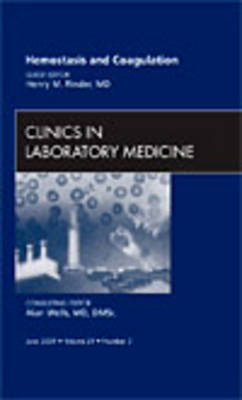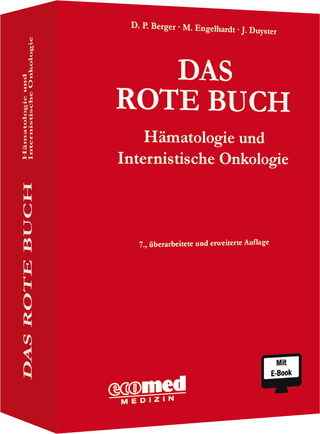
Hemostasis and Coagulation, An Issue of Clinics in Laboratory Medicine
2009
W B Saunders Co Ltd (Verlag)
978-1-4377-1234-6 (ISBN)
W B Saunders Co Ltd (Verlag)
978-1-4377-1234-6 (ISBN)
The understanding of hemostasis physiology has been considerably advanced by models of kinetics and by the complicated interplay of cells and soluble coagulation factors. This book explains how this physiology is reflected in clinical laboratory testing.
The understanding of hemostasis physiology has been considerably advanced by models of kinetics and by the complicated interplay of cells and soluble coagulation factors. How this physiology is currently, or will eventually, be reflected in clinical laboratory testing is the subject of this monograph; this information is key for laboratorians to implement physiologic concepts into practical data and for clinicians to understand the basis of and therefore correctly treat hemostatic disease. Many thousands of patients present with bleeding disorders or bleeding complications of other diseases, and millions of individuals suffer the morbidity and mortality of thromboembolic complications. How laboratory testing confronts the challenge of predicting different hemostatic risks and guiding therapy is the critical subtext of the chapters in this monograph. New developments in hemostasis physiology have identified thrombin as an important, if not central, coordinator of hemostatic function and thus a target for measurement to assess hemostatic function and risk. Whether such measurements as endogenous thrombin potential or thromboelastography will accurately predict and/or quantitate global hemostatic function is an important question. Modeling the clinical risks of bleeding or thromboembolism currently uses the laboratory presence or absence of particular risk factors, but our clinical understanding of risk appears to more closely approximate a dynamic model, even within individual patients. Therefore, testing for platelet dysfunction or comprehending the functional implications of a lupus anticoagulant may rely on our evolving comprehension of hemostasis phyisology and perhaps require more sophisticated interpretation of clinical predictors of hemostatic risk. This monograph aims to shed some light in these areas and promote investigation of such key hemostasis issues.
The understanding of hemostasis physiology has been considerably advanced by models of kinetics and by the complicated interplay of cells and soluble coagulation factors. How this physiology is currently, or will eventually, be reflected in clinical laboratory testing is the subject of this monograph; this information is key for laboratorians to implement physiologic concepts into practical data and for clinicians to understand the basis of and therefore correctly treat hemostatic disease. Many thousands of patients present with bleeding disorders or bleeding complications of other diseases, and millions of individuals suffer the morbidity and mortality of thromboembolic complications. How laboratory testing confronts the challenge of predicting different hemostatic risks and guiding therapy is the critical subtext of the chapters in this monograph. New developments in hemostasis physiology have identified thrombin as an important, if not central, coordinator of hemostatic function and thus a target for measurement to assess hemostatic function and risk. Whether such measurements as endogenous thrombin potential or thromboelastography will accurately predict and/or quantitate global hemostatic function is an important question. Modeling the clinical risks of bleeding or thromboembolism currently uses the laboratory presence or absence of particular risk factors, but our clinical understanding of risk appears to more closely approximate a dynamic model, even within individual patients. Therefore, testing for platelet dysfunction or comprehending the functional implications of a lupus anticoagulant may rely on our evolving comprehension of hemostasis phyisology and perhaps require more sophisticated interpretation of clinical predictors of hemostatic risk. This monograph aims to shed some light in these areas and promote investigation of such key hemostasis issues.
| Reihe/Serie | The Clinics: Internal Medicine |
|---|---|
| Zusatzinfo | Illustrations |
| Verlagsort | London |
| Sprache | englisch |
| Maße | 152 x 229 mm |
| Gewicht | 500 g |
| Themenwelt | Medizinische Fachgebiete ► Innere Medizin ► Hämatologie |
| ISBN-10 | 1-4377-1234-7 / 1437712347 |
| ISBN-13 | 978-1-4377-1234-6 / 9781437712346 |
| Zustand | Neuware |
| Haben Sie eine Frage zum Produkt? |
Mehr entdecken
aus dem Bereich
aus dem Bereich
Hämatologie und Internistische Onkologie
Buch | Softcover (2023)
ecomed-Storck GmbH (Verlag)
129,99 €
Buch | Softcover (2024)
Urban & Fischer in Elsevier (Verlag)
54,00 €
Buch | Softcover (2023)
Deutscher Ärzteverlag
29,99 €


